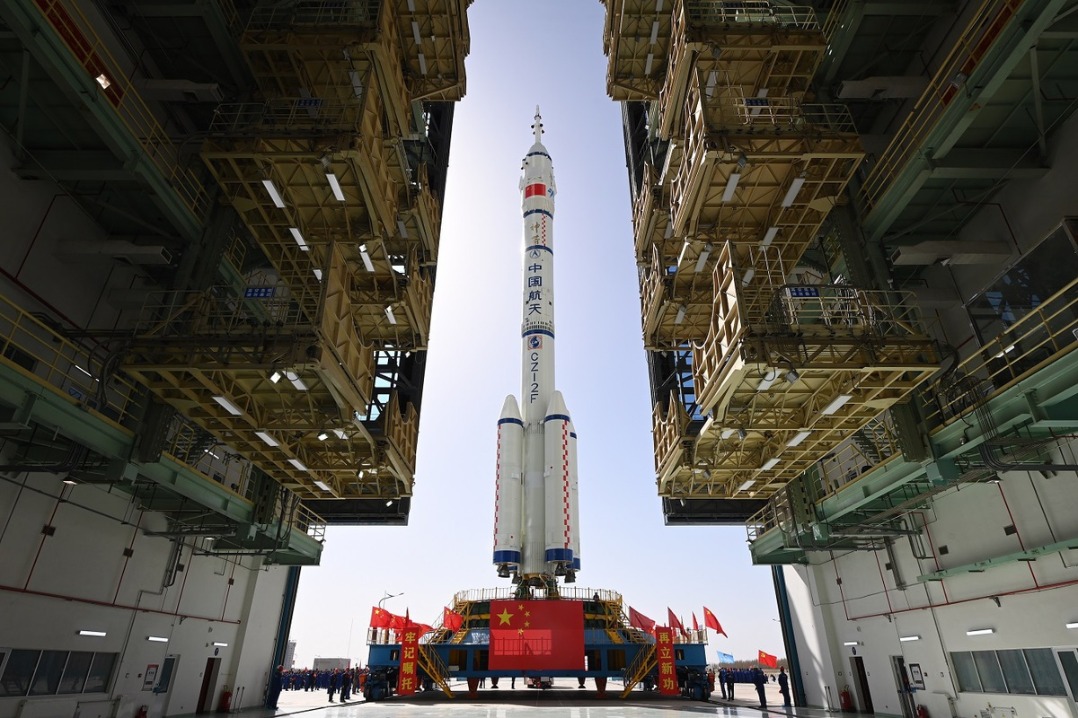Good-neighborly values in the spotlight of visit
By Meng Gencang and D. Batjargal | China Daily | Updated: 2022-12-01 07:34

At the invitation of President Xi Jinping, Mongolian President Ukhnaagiin Khurelsukh landed in Beijing on Nov 27 to begin a two-day state visit to China. During his visit, the heads of the two countries held official talks and issued a joint statement on advancing comprehensive strategic partnership between the two countries. The two leaders agreed to jointly advance modernization and build a community of shared future featuring peaceful coexistence, mutual assistance and win-win cooperation. Following the talks, the two heads of state witnessed the signing of 16 bilateral cooperation documents on the economy and trade, investment, customs and desertification control. President Khurelsukh's visit to China has the following features and significance.
First, the timing of his visit is significant. This is the sixth visit by a state leader to China after the 20th National Congress of the Communist Party of China and the first state visit to China since the election of Khurelsukh as president in June last year. Moreover, it is also the second meeting between the two leaders in two months, reflecting the frequency of high-level meetings and the traditional Sino-Mongolian friendship.
Second, it signifies that the comprehensive strategic partnership between China and Mongolia will reach a new level. During the meeting, the two leaders reaffirmed that developing China-Mongolia friendly cooperative relations is a priority for both countries. President Khurelsukh emphasized that developing good neighborly relations with China occupies an important position in Mongolia's foreign policy while underscoring that it is of utmost importance to further enhance bilateral relations and cooperation at a time when the world is facing the challenges of international tensions and the COVID-19 pandemic.
Meanwhile, President Xi pointed out that Mongolia plays a vital role in China's neighborhood diplomacy, which is based on amity, sincerity, mutual benefit and inclusiveness, and friendly and cooperative Sino-Mongolian relations are an example of good-neighborly relations. China and Mongolia have long maintained friendly, stable and win-win bilateral ties, which fully embody the special significance of building a model of state-to-state relations as neighbors sharing a common destiny.
Third, it also signals that there is enormous potential and room for to improve bilateral trade between China and Mongolia. China has been Mongolia's largest trading partner for more than a decade. The economic and trade relations between China and Mongolia are highly complementary. Mining is a pillar industry of Mongolia, and China is the main export destination for its rich mineral resources such as coal, crude oil and iron ore. Meanwhile, China mainly exports electrical equipment, construction materials and daily necessities to Mongolia.
According to Mongolian news media, in the context of the global economic downturn, the bilateral trade volume reached $10.9 billion in the first 10 months of this year, an increase of 25.8 percent year-on-year. Mongolia's export volume was $8.48 billion and its import volume was $2.47 billion, an increase of 30.7 percent and 11.4 percent respectively compared with the same period last year. On this basis, the two sides plan to double their trade volume to $20 billion in four to five years. To this end, the two sides plan to expand cooperation in trade, investment, finance, mineral resources and energy, infrastructure, digital economy and green development.
Furthermore, in order to strengthen the capacity of transportation and border checkpoints, the two sides are advancing the construction of the Gashuunsukhait-Gantsmod railroad, connecting the Khangi-Mandal border checkpoint by rail and upgrading the infrastructure of the Zamyn Uud-Erlian border checkpoint. It is worth mentioning that the Khangi-Mandal railroad will lay the foundation for opening up a third railway transport channel connecting China and Mongolia in the future.
In addition, the two sides agreed to deepen cooperation in culture, science, technology and education to promote people-to-people exchanges and strengthen cooperation in environmental protection and desertification control.
Meng Gencang is a lecturer at the School of Ethnology and Sociology, Inner Mongolia University; D. Batjargal is an associate professor of the Institute of International Affairs, Mongolian Academy of Sciences. The views don't necessarily represent those of China Daily.























